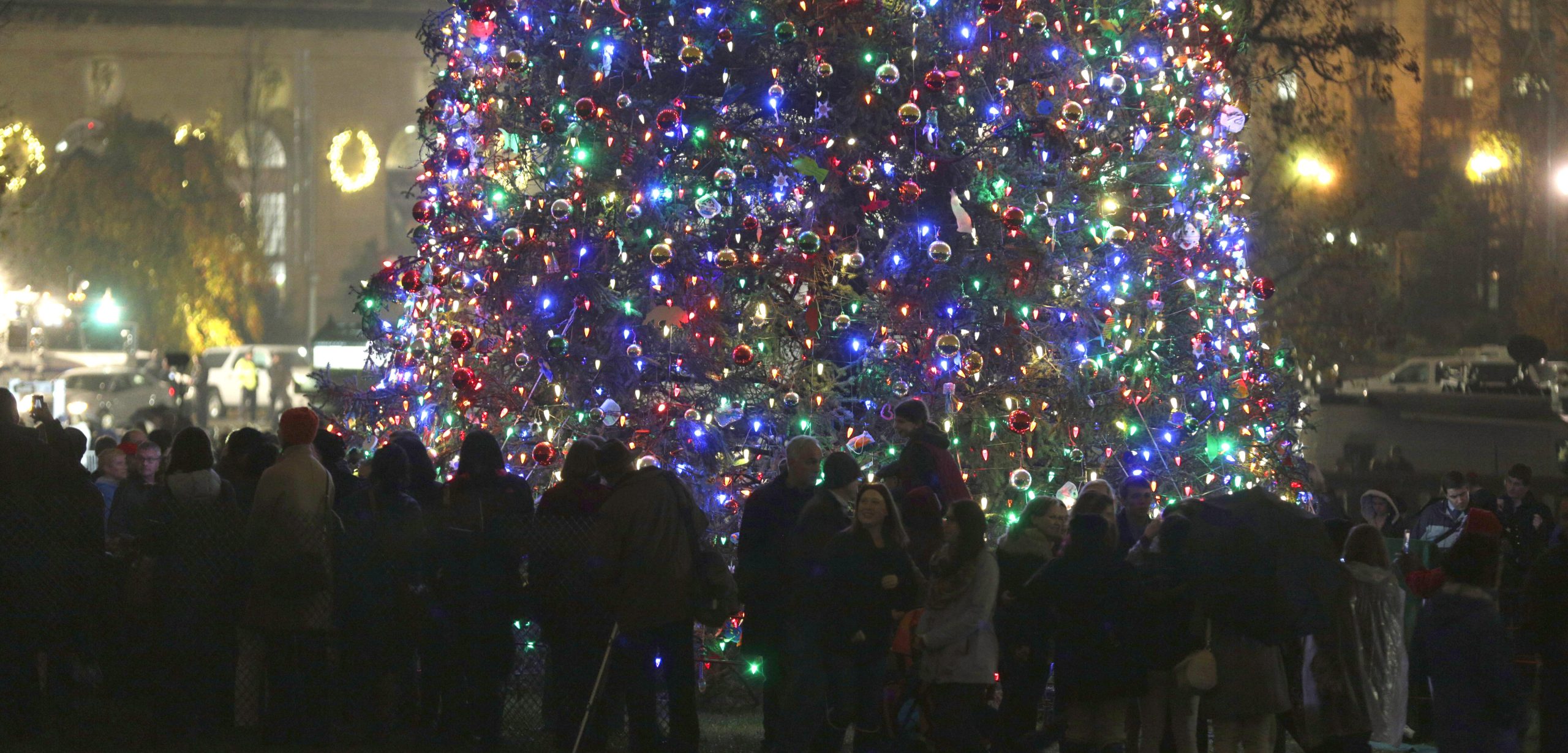Trashing the Capitol’s Christmas Tree
The US capital’s Christmas tree is decorated with marine debris.
Article body copy
If you’re in Washington, DC, this Christmas, take a good, hard look at the tree decorating Capitol Hill This year, hanging next to the traditional bells and snowflakes, you’ll see plastic turtles, fish, and jellyfish. The brainchild of artist Bonnie Dillard, these unusual decorations are made from marine debris—plastic that had washed up on the beach where she lives on Kodiak Island, Alaska.
“The garbage washing up on the beaches here has always bothered me,” says Dillard. And like many artists, Dillard envisions this trash as art: the perfect way to create social awareness.
This year’s Capitol Tree, a Lutz spruce that stands as tall as two telephone poles, came from the Chugach National Forest in coastal Alaska. As soon as Dillard heard about the US Forest Service’s call for local artists to decorate the tree, she knew she had the perfect platform to send her message.
Based on her prototype of a shampoo-bottle fish, the forest service selected Dillard to produce the ornaments, decorations made from ocean-borne toothbrushes, fishing nets, buoys, six-pack rings, and other refuse.
“My pet peeve is water bottles,” she says.
This past summer, Dillard rallied more than a hundred kids and adults to help, turning debris collected by the Island Trails Network, a local stewardship group, into roughly 250 ornaments bound for the US capital.
Dillard says some of the kids “wrote messages on the backs of ornaments to the President, wishing him ‘Merry Christmas’.”

One young Kodiak Island resident shows off her marine debris Christmas decoration. Photo courtesy of Bonnie Dillard
Dillard hopes that visitors to the Capitol Tree will see that the everyday items they use and throw away can have big environmental consequences.
Chris Pallister, cofounder of the advocacy group Gulf of Alaska Keeper, estimates that nearly half of the state’s 55,000 kilometers of shoreline is “heavily contaminated” with plastic. He says the junk fouls beach grasses, entangles animals, leaches chemicals, and breaks down into tiny slivers that can be eaten by fish and seabirds.
At the same time that Dillard’s group was busy making their ornaments, Pallister’s group partnered with the National Oceanographic and Atmospheric Administration’s (NOAA) Marine Debris Program to haul away nearly half a million kilograms (about 40 garbage trucks’ worth) of trash. But that’s just a drop in the bucket, he says.
Despite the cleanup’s relatively small scale, Nancy Wallace, head of the NOAA program, has hope. She says that marine plastic is a human problem. “We caused it, so we can solve it.”
Dillard, too, has hope: that the people who see the Capitol Tree—“some of them are our lawmakers!”—will want to take action against seagoing trash.

